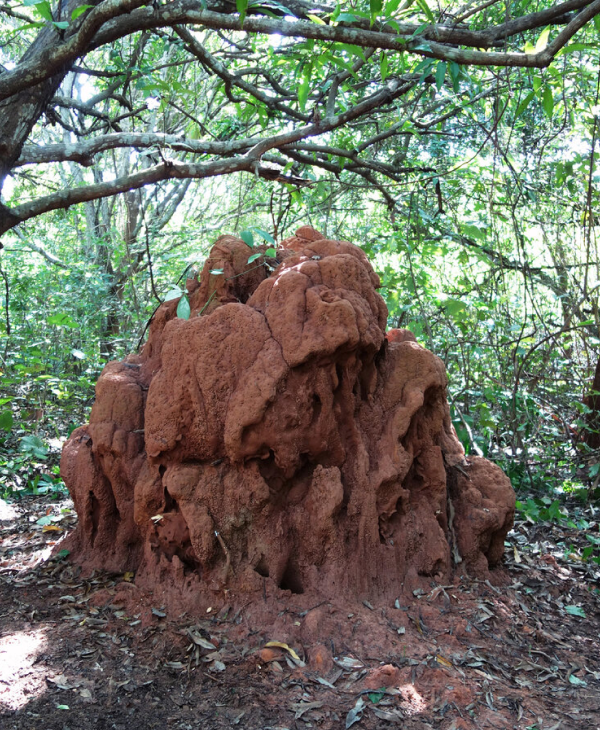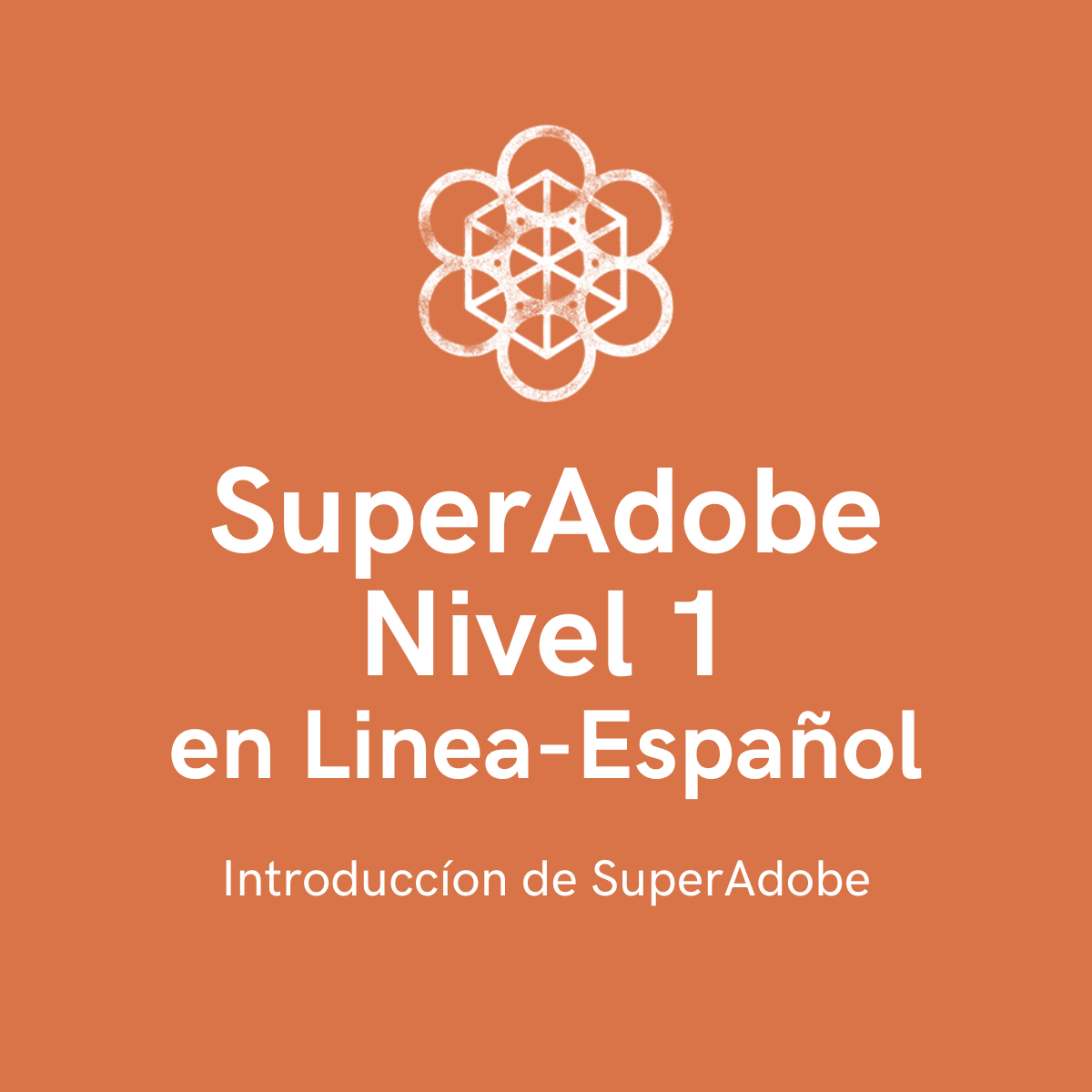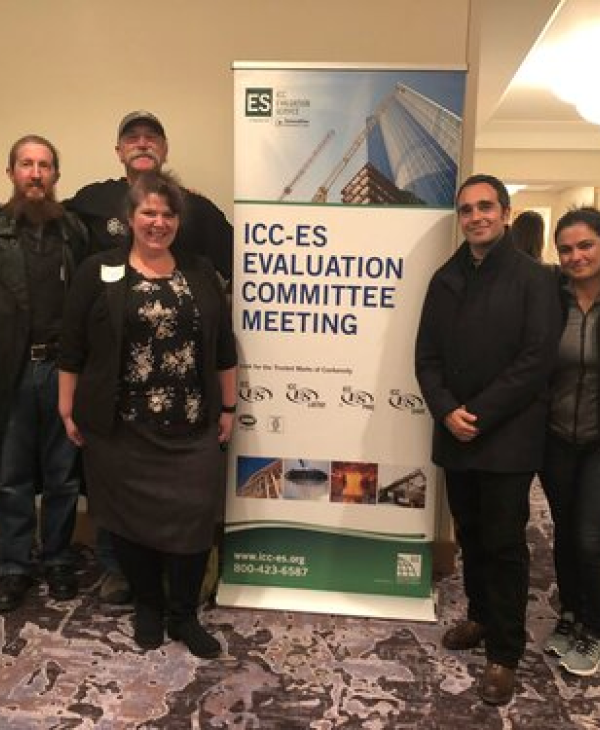In Casamance’s Djibelor neighborhood, a team of 12, led by French architect Rebecca Pelayo, responded to a private order for a local artist in residence’s SuperAdobe. The result was a beautiful 172 square foot dome finished with 30 tons of red earth coming from clay termite mounds. Read on to learn how Rebecca’s dome is making an impact in Senegal!
How did you first become interested in building SuperAdobe domes? Where did you learn?
In 2012, I was working on projects in Madagascar and during my research on local constructive culture I discovered the vernacular raw earth architecture of the island.
Unfortunately, this architectural heritage is slowly being lost under the strong pressures exerted by concrete lobby and leads to a shortage of skilled labor in raw earth construction. Without know-how, the red clay mud houses are quickly eroding or falling apart because of non-restoration which, in turn, makes people think earth material is too brittle, too dirty. In a word, obsolete. This had me concerned.
I wondered if there was a technique that could combine raw earth architecture with speed, solidity, affordability and ease of learning. That’s when I discovered SuperAdobe: a clay colossus! As an architect, I found it exciting to imagine that the old earthen architecture could merge with the ultra modern technicity of SuperAdobe.
I had to confirm feasibility in the context of Madagascar and I had to learn how to fill bags of soil. I couldn't go to the CalEarth Institute, so I trained with a former Khalili student : Paulina Wojciechowska in the UK (from Earth, Hands & Houses).
As I did, I immediately recognised the considerable potential of SuperAdobe.

You built a dome in Madagascar, and now one in Senegal. Why do you choose to build using SuperAdobe in Africa? How does this style of building lend itself to the local climate?
Africa is a continent studded with earthen architecture which shapes its landscape: from the city of Shibam in Yemen to the Musgum mud huts, through the vernacular habitats of West Africa. All true gems.
So building with earth may seem like an obvious and comfortable choice in Africa. However, it is more difficult than it seems because usually a concrete house will be considered more prestigious than an earthen house.
But I soon found out that earth construction is still present in the hearts and minds. For the village chief and the whole community, an earthen house perpetuates traditions and integrates within a homogeneous culture. The desire to safeguard this heritage then becomes a collective ambition. SuperAdobe "cements" the house, both literally and figuratively. It is strong enough to survive storms. It is modern enough to generate widespread enthusiasm because of an innovative technique allowing to bridge culture and modernity (unlike concrete which represents a cultural, social and ecological rupture).
The recurring problem that I faced with each project is torrential rains that hit the exterior coat. In Madagascar, the dome has no roof and must be re-coated every year. In Senegal, this time, a roof will crown the dome before it has to face the floods during the wintering (from June).
Your recent project in Senegal was built for a local artist. What will it be used for?
My client is a traveler who has crossed Casamance and Madagascar forests during 40 years. He was a mission manager in leprosariums. After visiting the dome in Madagascar, he asked me to draw a small one in Casamance. This dome is the first earthen construction of a series of 4 which he will be sponsoring and are destined to become local artists’ residences. The next buildings will also be experimental earth structures: adobe, rammed earth, cob, wattle and daub.
Explain some of the unique features of this dome. How did you build the star design into the top of the dome?
I added the octagram to the dome design in my office in France, a week before flying to Dakar. This wooden star, highly symbolic, is tied to painful events that affected my client, here is its meaning:
The heart of the star represents the origin of all things and the eight branches (8 cardinal points) turn to the outside, the future, which represents 8 virtues :
The Northern branch is Hope. Southern is Peace. West is Will. East is Love. North East is Devotion. South East is Empathy. South West is Nobility. North West is Courage.
Loic George was the chief carpenter of the octagram alongside David Gregoire. He explains:
"In order to have a perfect geometry, I drew a circle on the ground and then the star (in 1:1 scale). This became my workbench. I put the wooden battens on the ground star and we assembled them with nails and screws. But it would have been much better to use bolts and threaded rods or a mortise and tenon system. I had neither the time nor the appropriate equipment, so this star was a real challenge."

Why did you cover the dome with earth from clay termite mounds?
In Senegal, termite mounds are a source of clay material often used for the production of adobe bricks but also for ceramics because, once treated by termites, the clay is particularly fine but also naturally enriched with additives which ensure a very low shrinkage.
The small village of Djibelor is sprinkled with epigeous termite mounds (growing above the ground). These invincible fortresses, two meters high, are made of clay soil, cellulose and lignin from wood digested by termites. Their saliva conglomerates the elements together, thus forming an earthen concrete mortar ideal for filling bags and coating.
The termites clay coating allows the earthen walls to breathe continuously. The thermal regulation of the dome works perfectly: its walls are able to absorb and expel moisture permanently, thus controlling the temperature. When it is 95 °F outside, the dome stays cool inside at 73 °F. This is exactly what happens in a termite mound: hygrothermal comfort guaranteed!
We used abandoned mounds but also live mounds inhabited by its queen. Cut down a chimney and come back the next day: the structure will have grown back by 50cm. We just had to bend over and pick up the earth! This is how we worked alongside the termites.
What were some of the challenges you ran into while building this dome?
The only challenge was the TIME factor as the deadline was so short.
With a sun that could knock out an elephant from noon to 3:00 p.m., we had to work early in the morning and late in the afternoon.
We built and closed the dome within 14 (non consecutive) days with a team of 12 people. Then, the first plastering coat was applied in 3 days.
Our mood did not suffer from this race against the clock, thanks to the HUMAN factor which accounts for 90% of the success of this work camp. My team was exceptional.
What do the local residents of Djibelor think of the dome?
I really like the moment when I see a visitor observing the SuperAdobe dome.
There were 2 observation rounds :
First, the constructive technique is revealed; the bags fill up, the barbed wire unrolls, the rings rise successively forming this giant white « meringue ». People are stunned as they have never seen this type of construction before. They ask questions, they touch the bags, they find it fantastic.
A few days later, when the ogival structure is revealed, smooth and coated in red, the visitors exult looking this giant « termite mound ». We were fortunate to be surrounded by extreme kindness. The Casamance inhabitants are lovely people!

Were traditional Senegalese design elements implemented into the dome?
Djibelor is located in the Diola kingdom. The solidity and complexity of Diola houses make its architecture one of the most remarkable in West Africa. The palm trees frame and thatched roofs are representative of this unique heritage. We quickly decided to include a roof, in order to protect the plasters from intense precipitation and of course we chose the Diola one.
16 rafters already pre-installed between 2 rows of rings are waiting for the roof. I can't wait to see this new traditional element cover the dome.
Like local traditional architecture, the earth was extracted in situ (from termite mound), the scaffolding is made of bamboo, the straw for coating comes from a paddy field close to the village. As is the custom, the village chief opened the building site by blessing the soil, sacrificing a rooster and watering the earth with Soum-soum (cane wine). We inaugurated the dome with a concert of Kora, the acoustic was breathtaking; it was a magical moment.
How much did this dome cost to build?
The main masonry cost 630 $ (39 $ per m2). This includes 1km polypropylene bags, 40m2 plastic membrane for drainage, 11 rolls of barbed wire, 5m of PVC pipe, 8m3 of sand, wood for the roof, octagram and door and window frames.
Not included: the logistics cost (transport, wages, meals) and the equipment purchase (compass, shovels, saw, nails, screws, wood bits…). In addition, we must add metal joinery, thatched roof and interior fittings (furniture, sink).
Do you plan to build more domes throughout Africa?
Absolutely. The success of this human and architectural adventure reinforces the involvement of the Genius Ecodomus team towards new projects in Casamance with high environmental value. I cannot say more yet but of course I will give you information as soon as I can.
I also place a lot of hope on the five Senegalese men who have been trained, wishing them to build other domes in SuperAdobe and to spread this technique through Casamance.
If you could describe SuperAdobe in one word, what would it be?
Link.
To read more about Genius Ecodomus association, please visit:




